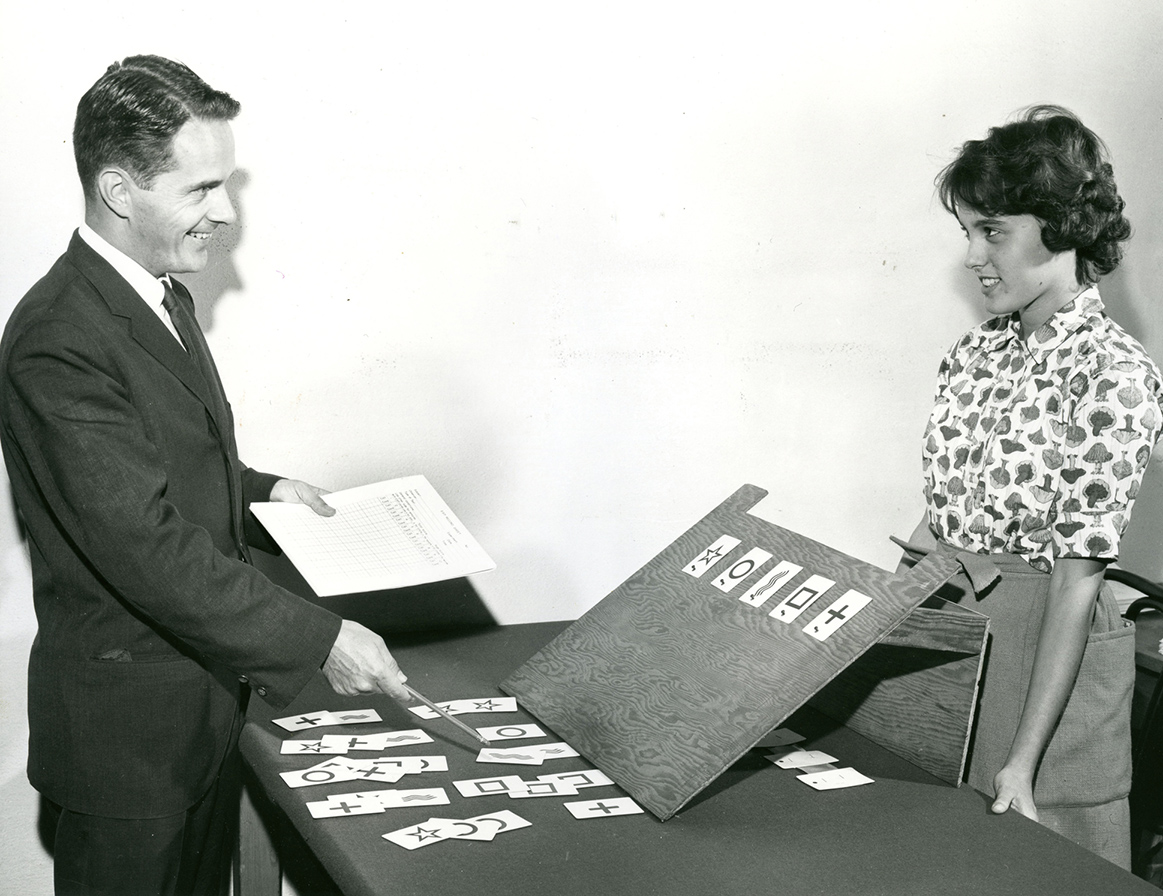Difference between revisions of "Template:POTD protected"
Occultwiki (talk | contribs) |
Occultwiki (talk | contribs) |
||
| (31 intermediate revisions by the same user not shown) | |||
| Line 1: | Line 1: | ||
{| role="presentation" style="margin:0 3px 3px; width:100%; text-align:left; background-color:transparent; border-collapse: collapse; " | {| role="presentation" style="margin:0 3px 3px; width:100%; text-align:left; background-color:transparent; border-collapse: collapse; " | ||
|style="padding:0 0.9em 0 0;" | [[File: | |style="padding:0 0.9em 0 0;" | [[File:Zener Cards Test.jpg|300px|thumb|]] | ||
|style="padding:0 6px 0 0"| | |style="padding:0 6px 0 0"| | ||
'''[[ | A significant development in '''[[clairvoyance]]''' research came in the 1930s, when J. B. Rhine, a parapsychologist at Duke University, introduced a standard methodology, with a standard statistical approach to analyzing data, as part of his research into extrasensory perception. A number of psychological departments attempted to repeat Rhine's experiments, with failure. W. S. Cox from Princeton University with 132 subjects produced 25,064 trials in a playing card ESP experiment. Cox concluded, "There is no evidence of extrasensory perception either in the 'average man' or of the group investigated or in any particular individual of that group. The discrepancy between these results and those obtained by Rhine is due either to uncontrollable factors in experimental procedure or to the difference in the subjects." | ||
<p><small>Photo Credit: David M. Rubenstein Rare Book & Manuscript Library, Duke University</small></p> | |||
<p><small> | |||
[[:Category:Images|'''(More Images)''']] | [[:Category:Images|'''(More Images)''']] | ||
<div class="potd-recent" style="text-align:right;"> | <div class="potd-recent" style="text-align:right;"> | ||
Latest revision as of 05:52, 2 May 2025
|
A significant development in clairvoyance research came in the 1930s, when J. B. Rhine, a parapsychologist at Duke University, introduced a standard methodology, with a standard statistical approach to analyzing data, as part of his research into extrasensory perception. A number of psychological departments attempted to repeat Rhine's experiments, with failure. W. S. Cox from Princeton University with 132 subjects produced 25,064 trials in a playing card ESP experiment. Cox concluded, "There is no evidence of extrasensory perception either in the 'average man' or of the group investigated or in any particular individual of that group. The discrepancy between these results and those obtained by Rhine is due either to uncontrollable factors in experimental procedure or to the difference in the subjects."
Photo Credit: David M. Rubenstein Rare Book & Manuscript Library, Duke University |
